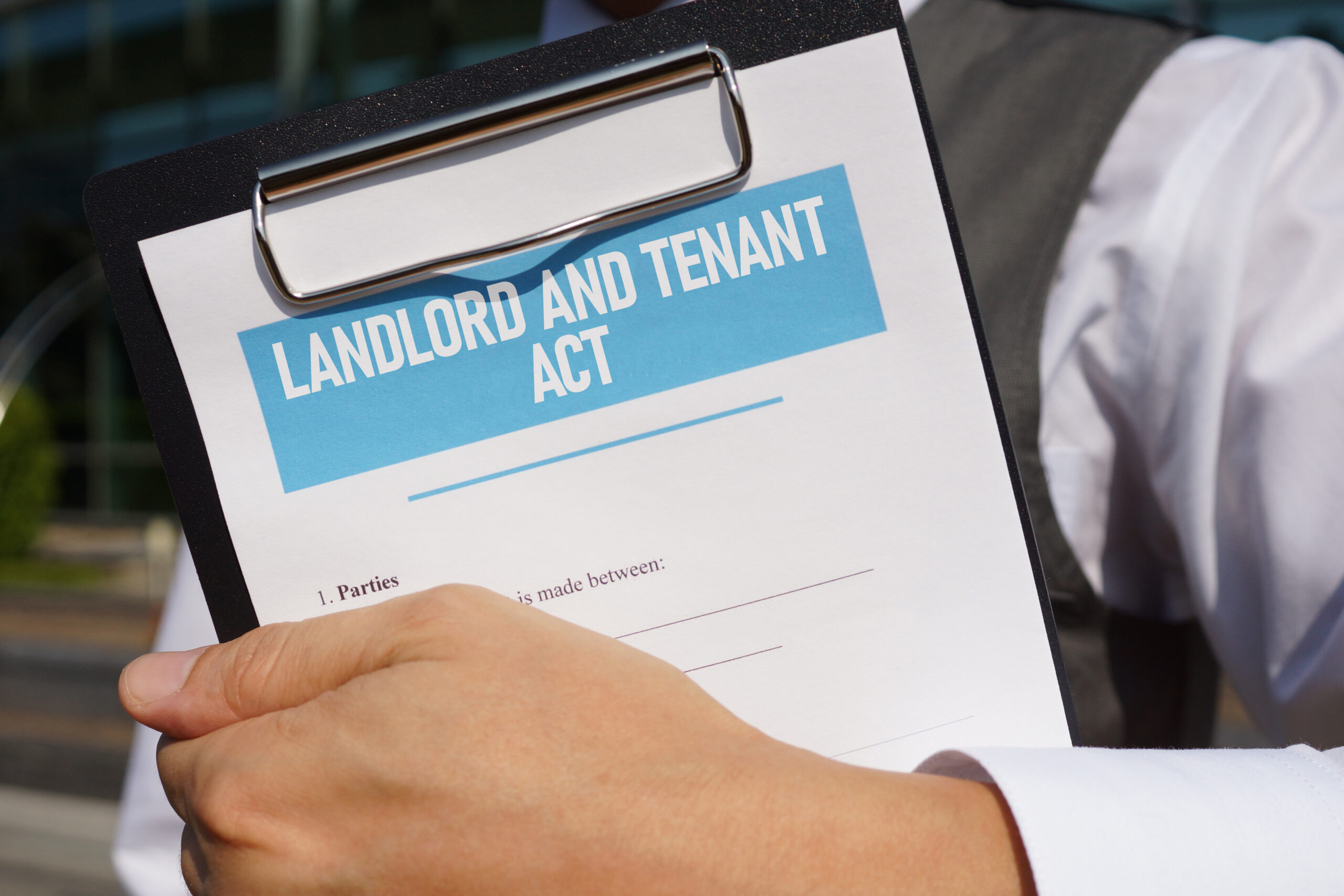Civil Litigation AND DISPUTE RESOLUTION
- Landlord and Tenant Disputes
- Money Claims
- Litigation
- Alternative Dispute Resolutions (ADR) – Conciliation, Arbitration and Mediation services

Common causes of tenant disputes
Both tenants and landlords may need to seek a legal advice for a range of different matters and disputes, whether it’s payment and interest or maintenance, damage, cleanliness and/or breaking the terms in their tenancy agreement. There could also be issues in the payment of bills, increase of rent, and the deposit returns.
On 20 March 2019, a new Homes (Fitness for Human Habitation) Act came into effect. Its aim is to give renters more powers to act against landlords who provide sub-standard accommodation. If properties do not meet a certain standard and requirement, tenants have the right to take their landlord to court.
What can I do regarding an issue around damage to property?
In September 2018, the government announced further protections as part of the Tenant Fees Bill for tenants against unfair letting fees. Tenants in the private rented sector will no longer be forced to pay excessive fees for minor damages.
This will put a stop for tenants to being charged hundreds of pounds for a damaged item that only costs a few pounds to replace – such as £60.00 to replace smoke alarms which the local council would have replaced for free.
The Bill is expected to save tenants around £240 million a year.
However, while the law states that the tenants do not have to pay for normal wear and tear, landlords can claim back for the costs of any damages beyond what is reasonable. The tenants also have an obligation to stick to terms of their tenancy regarding keeping pets. Should pets cause any damage, landlords have the right to deduct a certain amount from a tenant’s deposit or ask them to pay for repairs.
Can a landlord gain access to a property?
A landlord cannot gain access to a property without consent. During the tenancy period, it is illegal for a landlord to enter a property without the consent of a tenant.
Landlords have the right to ‘reasonable’ access to carry out repairs but must give at least 24 hours’ notice. This means a landlord must not pay their tenants an impromptu visit without good reason.
It is a criminal offence for landlords to harass their tenants and these includes:
Entering property without permission
Using abusive or threatening behavior
Entering the property to undertake unreasonable and needless repairs to annoy the tenant.
They must not physically throw their tenants out of their property.
Evicting tenants
There are two types of assured short hold tenancies:
Periodic tenancies – run week by week or month by month with no fixed end date.
Fixed-term tenancies – run for a set amount of time.
Procedure:
Give your tenants a Section 21 notice if you want the property back after a fixed term ends – if there is a written contract and during a tenancy with no fixed end date.
Give them a section 8 notice if they have broken the terms of the tenancy.
You cannot use a Section 21 notice if these apply:
It is less than 4 months since the tenancy started, or fixed term has not ended, unless there is a clause in the contract allowing you to do so.
Property is categorised as a house in multiple occupation (HMO) and does not have a HMO licence from the council.
Tenancy started after April 2007, and you have not put the tenant’s deposit in a deposit protection scheme.
Tenancy started after October 2015, and you have not used form 6a or a letter with all the same information on it.
The council has served an improvement notice on the property in the last 6 months.
The council has served a notice in the last 6 months that says it will do emergency works on the property.
You have not repaid any unlawful fees or deposits that you charged the tenant.
You also cannot use a Section 21 notice if you have not given the tenants copies of:
Property’s Energy Performance Certificate
Government’s ‘how to rent’ guide.
A current gas safety certificate for the property, if the gas is installed.
Section 21 notice must give your tenants at least 2 months’ notice to leave property. If you have a ‘contractual’ periodic tenancy, you may need to give a longer notice period. The amount of notice must be the same as the rental period, if more than 2 months. For example, if your tenant pays rent every 3 months, you must give 3 months’ notice.
Section 8 notice of seeking possession:
Must fill in a ‘Notice seeking possession of a property let on an assured tenancy or an assured agricultural occupancy’. Specify on the notice which terms of the tenancy they have broken.
You can give between 2 weeks’ and 2 months’ notice depending on what terms they have broken.
You can apply to the court for a possession order if your tenants do not leave by the specified date.
You can get legal advice on how to fill in a Section 8 with the correct notice periods and how to give it to your tenants.
2.) Apply to court for a standard possession order if tenants do not leave by the date specified on the notice and they owe you rent. You can also apply for an accelerated possession order if you are not claiming rent arrears.
3.) Apply for a warrant for possession if your tenants still will not leave – this means bailiffs can remove the tenants from your property.
Excluded tenancies or licenses.
It is not imperative to go to court to evict tenants if they have an excluded tenancy or license, for example if they live with you.
You only need to give them a ‘reasonable notice’ to quit. This usually means the length of the rental payment period, so if your tenants pay rent weekly you can give them one week’s notice. The notice does not have to be in writing.
You can then change the locks on their rooms, even if they still have belongings in there.
Assured and regulated tenancies
If tenants started their tenancy before 27 February 1997, they might have an assured or regulated tenancy. You will then have to follow different rules to evict them and they will have increased protection from eviction.
Your tenant owes rent and gets housing benefits.
If your tenant owes you rent and claims Universal Credit or Housing Benefit you may be able to get the rent paid straight to you instead of evicting them.
This is known as ‘managed payments’.
Requested managed payments if your tenant is claiming either:
Universal Credit – apply to the Department for Work and pensions.
Housing Benefit – contact local council that pays your tenants’ benefits.
We have extensive experience in handling Landlord and Tenant dispute matters. To discuss about your Landlord and Tenant dispute with one of our Solicitors, please contact us on 01279 312185 or submit our enquiry form given below.

You can apply to a county court to claim money you are owed to by a person or business. This is known as a court claim. It often used to be known as taking someone to a ‘small claims court’. You can apply online or by post.
A mediation service could be both a cheaper and quicker alternative, and this is when an unbiased person helps both sides to an agreement.
Part 7 Civil Procedure Rules set out the process for court claims for money only. A claimant must follow the correct steps before court action and issue a claim form and particulars of claim correctly.
The defendant can decide whether they want to:
Admit the claim.
Admit part of the claim and defend part.
Defend the claim.
If the defendant does not respond to the claim, the claimant can apply for default judgement.
Procedure:
Claimant steps before court action:
Where the claimant is a business (including landlords), the steps they take before they can issue a money claim depend on the type of debt they want to enforce.
Pre-action protocol for debt claims:
Requires the claimant to send a letter of claim to the defendant before starting court proceedings. The letter of claim must state:
The amount of debt
Whether interest or other charges are accruing
Whether the debt is an oral or written agreement
Details of how the debt can be paid.
The claimant must send a statement of account with the letter, showing what interest and charges have been added.
They must enclose an information sheet and reply form.
How claims are issued:
We will assist the claimant to complete the relevant form to make a County Court money claim. Also we can deal with Money Claims Online (MCOL) service if the claim is:
For a fixed amount of money less than £100,000
Against no more than two defendants
Served to a defendant with an address in England or Wales.
After you make a claim:
Your claim, including your name and address will be sent to the person or business owing you money (the ‘defendant’).
They must then respond to your claim. You will either be sent a letter or an e-mail telling you the date to respond by.
What happens at the hearing
If there is a hearing, you can either:
Represent yourself.
Pay for a barrister or solicitor to represent you.
Ask someone to advise you in court – they do not have to be a lawyer.
Ask someone to speak on your behalf – you might need to get the court’s permission.
Your hearing can be held in the judge’s room or a courtroom in a country court if your claim is less than £10,000. There might be a formal hearing if you are claiming for more.
After the hearing
You will get a decision on the day of the hearing. The court will also send you a copy of the decision by post.
If your case is successful and you win your case, the court will order the person or business who owes you money (the ‘debtor’) to pay you. There are ways the court can collect your payment if they ignore the court order.
Appeal the decision
You can appeal the decision if you think the judge made a mistake during the hearing. You must do this within 21 days of getting the decision.
Enforce a judgement
You can ask the court to collect payment from the person or business who owes you money (“the debtor”) if they do not pay you after receiving the court order.
You must pay a court fee when you ask the court to collect the payment.
You can also:
Send bailiffs to collect payment.
Get money deducted from wages.
Freeze assets or money in an account
Charge the debtor’s land or property.
We have extensive experience in handling money claim matters. To discuss about your money claim matter with one of our Solicitors, please contact us on 01279 312185 or submit our enquiry form given below.

Civil Litigation relates to disputes involving individuals and their rights in areas such as Contract, Civil wrongs, Tort Law, Property Law and other miscellaneous matters. This generally includes two (or more) parties, who seek compensation for damages incurred or specific performance that were not delivered.
We are Legal professionals with specialty expertise in civil litigation and we will represent a party at a trial, a hearing, or a form of alternative dispute resolution (ADR) methods such as arbitrations, mediations, or med-arb.
In England & Wales, the Court has a set of rules that are important in Civil Litigation, and this is known as the Civil Procedure Rules (CPR).
The CPR sets out the guidance and certain steps parties should take before a Claim is issued at Court. These are known as the Pre-Action Protocols. There are different protocols for different areas, however the general protocol is the Practice Direction on Pre-Action Conduct and Protocols.
Procedures for Civil Litigation:
First step: The pre-action protocols
Parties to a dispute are encouraged to exchange sufficient information regarding their positions so they can identify, narrow, and try to settle the issues between them. This means that parties will exchange correspondence and meet face-to-face.
Court proceedings should always be the last resort. One of the main aims of the protocols is to ensure that parties resolve the dispute out of court, or at the very least narrow their issues so that the real issues are displayed before court.
Second step: Pleadings
If the parties cannot resolve the dispute out of court, a claimant will commence proceedings by issuing a claim form at the appropriate court. It will then be served on the defendant, typically accompanied by the particulars of claim, which explains:
Facts and matters said to give rise to a claim.
Legal basis
Remedies the claimant seeks (usually monetary compensation)
A defendant must respond to the claimant in written form within 14 days of service of the particulars. Alternatively, they can send an acknowledgement of service to the Court and the claimant (again within 14 days), which will give the defendant a total of 28 days to submit its defense.
If the defendant requires more time due to several circumstances, then it is possible to agree with the claimant to agree an extension of time. The claimant can provide a response to the defense.
Pleadings are usually drafted by the parties’ legal representatives. If a matter is technically complicated, an expert may be asked to help to draft the pleadings.
Third Step – Cost and Case Management Conference (CMC)
The CMC deals with administrative matters regarding the conduct of the case and checks the issues between the parties are understood. However, the Court may also hear applications from any party.
During the hearing, the Court will provide a timetable for the management of the case to trial. The timetable is also known as directions, and it details the steps the parties must take and when.
The Court must also consider other pressing matters such as the parties’ legal costs and the extent the parties must provide with each other their relevant documents and the need for expert evidence.
Prior to the CMC, the parties’ representatives will prepare documents; which may include a cost budget with full details of the costs incurred and an estimate of costs going forward, a disclosure report with details of a party’s electronic and hard copy documents and a draft timetable.
The parties will be encouraged to agree as much as they can before the CMC. If the parties can agree everything, the Court will ultimately decide that a hearing is not at all necessary and will simply provide the parties with an order that records what has been agreed.
Fourth step – Disclosure
Parties will make available the documentary evidence in the case.
A document includes anything on which information is recorded (e.g., physical paper, computers, mobile phones, deleted electronic data and metadata).
Both parties must undertake a reasonable investigation and search for documents, although to determine the reasonability of documents will rely on the circumstances of the case and the value of the claim.
A party will normally be required to disclose documents that support or undermine the case of any of the parties to the litigation; known as ‘standard disclosure’.
Usually, a list of documents that exist or have existed is prepared and any party to the litigation has the right to inspect the documents or ask for copies. A party may be permitted to withhold categories of documents from inspection, such as, communications between a party and its legal advisors (solicitors and/or barristers).
Fifth step – Witness statements
A party’s documents may prove the claim or defense, but witness evidence is also often required to explain the background of the dispute, or to fill any gaps in the documents.
Purpose of the witness statement is to set out, in writing, the factual evidence of a witness. A witness is not allowed to provide opinion evidence. At trial, the witness may be cross-examined by the opposing party.
Based on client’s instructions as well as provided documents we will assist preparing witness statements, but it is important that the statement is in the witness’s own words. It is a requirement for the witness to sign a statement of truth that confirms the facts and matters within the statement to be true.
Sixth step – Expert evidence
A court may direct the parties to instruct a single joint expert. However, in claims of professional negligence, a court will often allow parties to submit their own expert evidence. Expert evidence assists the Court in cases where their technical knowledge and expertise are needed.
Expert evidence, unlike witness evidence, will be opinion evidence. An expert will provide a written report that will be sent to the Court and the opposing party. If the parties want the experts to provide oral evidence at trial, they need to have permission from the Court. The Court may ask opposing experts to meet in order to discuss their evidence, with a view to producing a statement for the Court that sets out the matters on which the experts agree and disagree.
Seventh step – Pre-Trial Review (PTR)
Like the CMC, the PTR is an administrative hearing. In this, the Court will check whether the parties have complied with the timetable and with any orders the Court has made during litigation.
The Court will fix the date for a trial and finalize the timetable for the trial as well as a list of issues to be decided.
The Court will further consider whether there is a further opportunity before the trial for the parties to settle the dispute.
Eight step – Alternative Dispute Resolution (ADR)
Court will direct the parties to consider alternative methods of resolving their disputes without a trial. The timing and nature of ADR varies, but the most common methods are negotiation and mediation. The parties may also make a Part 36 offer, which have potentially significant cost consequences.
Mediations and arbitrations are conducted on a ‘without prejudice’ basis. This means statements made in a genuine attempt to settle a Court cannot be made before the Court as evidence against the party making the statements.
Ninth step – Trial
Parties will usually instruct barristers to present their case to the judge. They will explain the law and any relevant case law, while drawing the Court’s attention to relevant documents and cross-examining the opposing party’s witnesses and experts. Any witnesses and experts will also give their evidence.
At the conclusion of the trial, the judge will consider all the submitted evidence before passing the judgement.
Our solicitors at Lawsmith Solicitors have extensive experience in handling General Civil Litigation matters. To discuss about your Civil Litigation matters with one of our Solicitors, please contact us on 01279 312185 or submit our enquiry form given below.

Overview:
Alternative Dispute Resolution (ADR) refers to processes that resolve disputes outside the courtroom. By avoiding litigation, ADR provides a practical, efficient, and confidential path to agreement.
At Lawsmith Solicitors, we provide ADR services that help you settle disputes faster and more cost-effectively—so you can move forward without the burden of litigation.
Why Choose ADR?
- Cost-Effective: Avoid the high legal fees associated with lengthy court proceedings.
- Faster Resolution: ADR helps you reach an agreement quickly, without waiting months for a court date.
- Confidential: Unlike public court hearings, ADR keeps your dispute private.
- Flexible Solutions: You have more control over the outcome, tailoring agreements to suit your needs.
- Preserve Relationships: ADR promotes cooperation, helping maintain personal or business relationships.
- Court-Endorsed: Courts expect parties to consider ADR before litigation and may penalize unreasonable refusals.
Methods we offer:
At Lawsmith Solicitors our experienced team advice on and provides representation in various forms of ADR, including:
Arbitration:
Arbitration involves a neutral third party – the Arbitrator – who hears both sides and makes a legally binding decision. It’s a private process designed to resolve disputes efficiently.
What makes this method different?
Arbitration is more formal than conciliation or mediation and closely resembles court proceedings, but it is typically faster and confidential.
Who does this method suit?
Ideal for parties who want a clear, enforceable outcome without the time and expense of litigation.
Conciliation:
Conciliation involves a neutral third party – the Conciliator – who assists disputing parties in reaching a voluntary settlement. It focuses on guided discussions to resolve disagreements and is often used in employment, consumer, and contractual disputes where cooperation is possible.
What makes this method different?
Unlike arbitration, where a decision is imposed, conciliation encourages collaboration and mutual agreement. Unlike mediation, the conciliator takes a more active role by suggesting solutions and guiding parties toward an agreement. It is usually free and less formal than arbitration, making it an accessible option.
Who does this method suit?
Conciliation’s informal and flexible nature makes it suitable for a wide range of disputes, especially where parties are willing to cooperate but need guidance to reach a resolution.
Mediation:
Mediation involves an independent third party – the Mediator – who facilitates communication between the parties to help them negotiate a resolution. Mediated agreements can become legally binding if signed by both parties.
What makes this method different?
Unlike arbitration or conciliation, the mediator does not impose a decision. Instead, the parties retain full control and work together to reach their own agreement.
Who does this method suit?
Ideal for parties who want to preserve relationships, maintain flexibility, and resolve disputes collaboratively without formal proceedings.
Contact our Litigation and Dispute Resolutions Lawyers:
Solicitors at Lawsmith Solicitors have extensive experience in handling ADR matters. To discuss your ADR matters with one of our solicitors, please contact us on 02081 295 999 or email us at info@lawsmithsolicitors.co.uk or submit our enquiry form.





